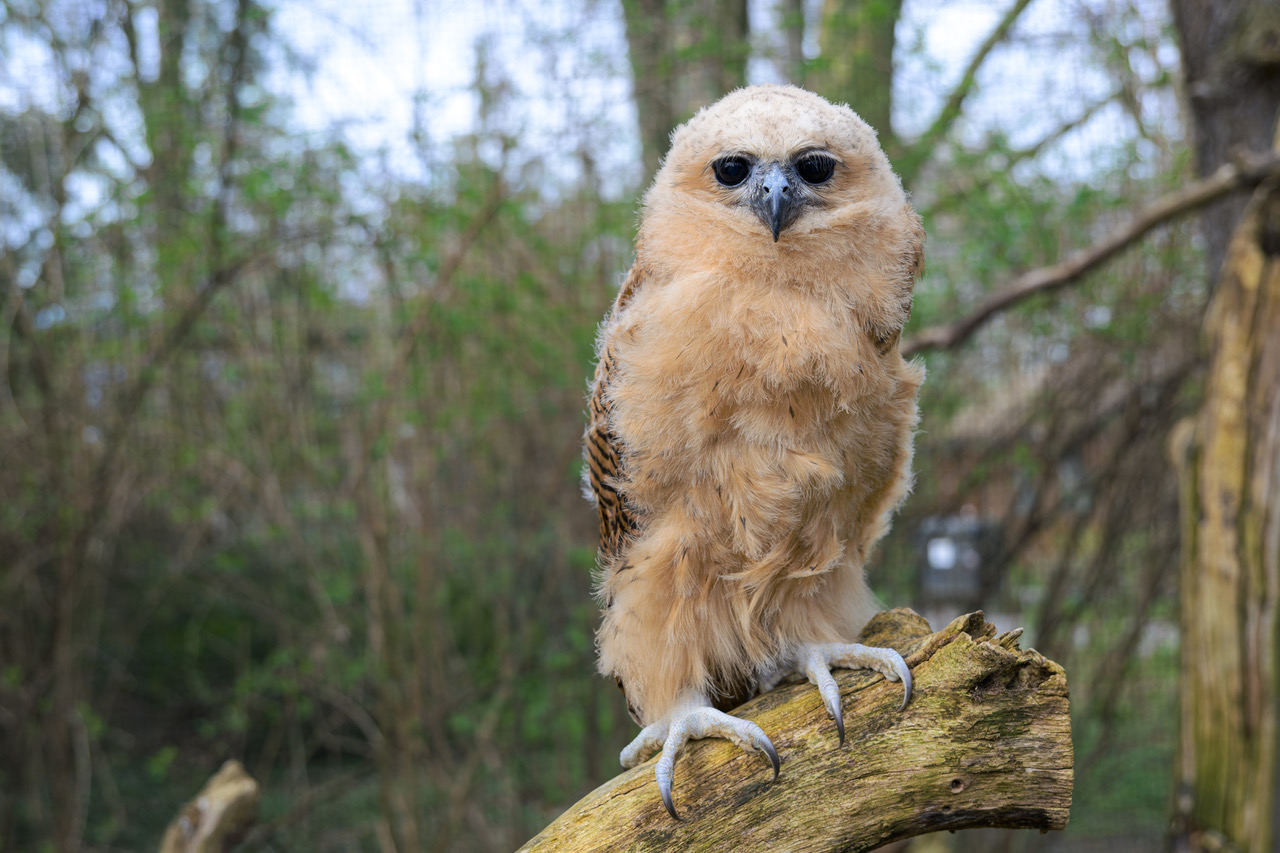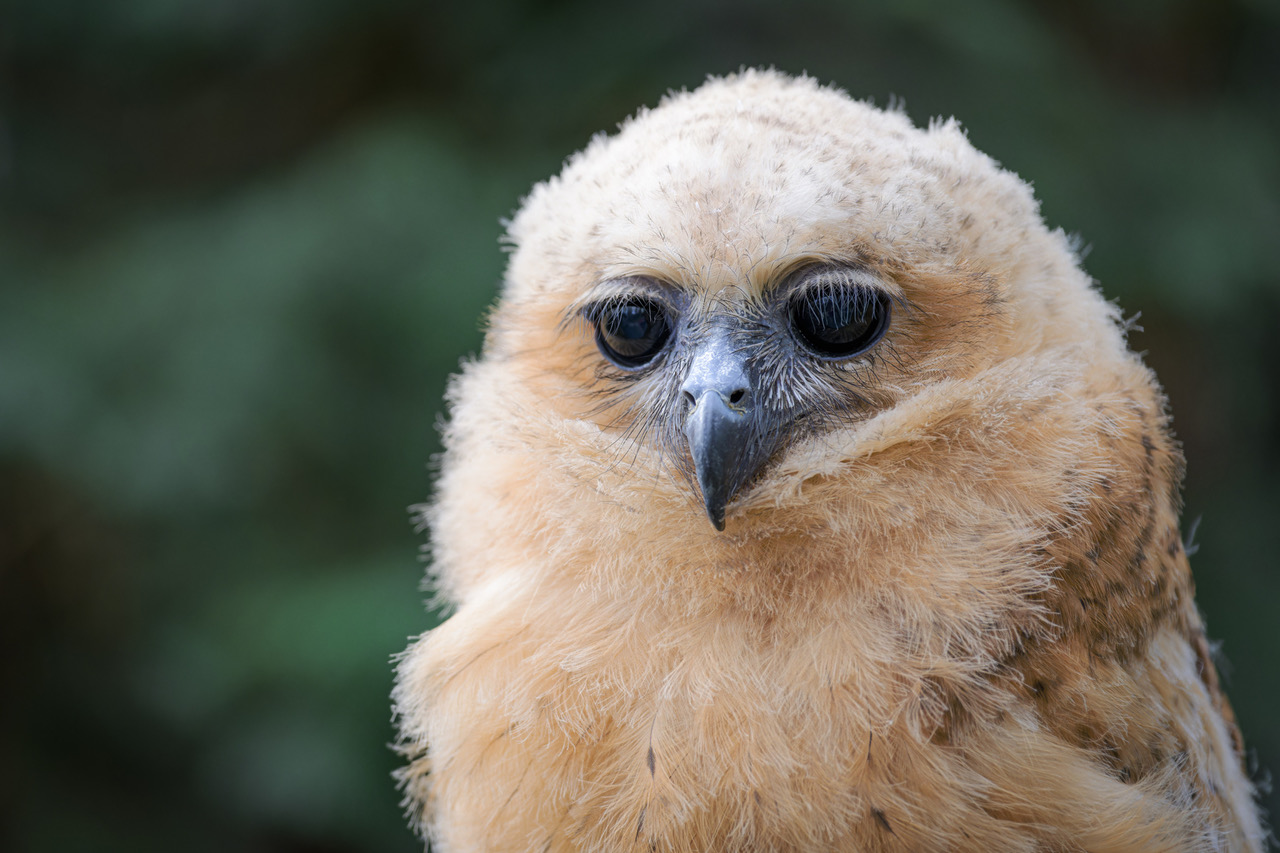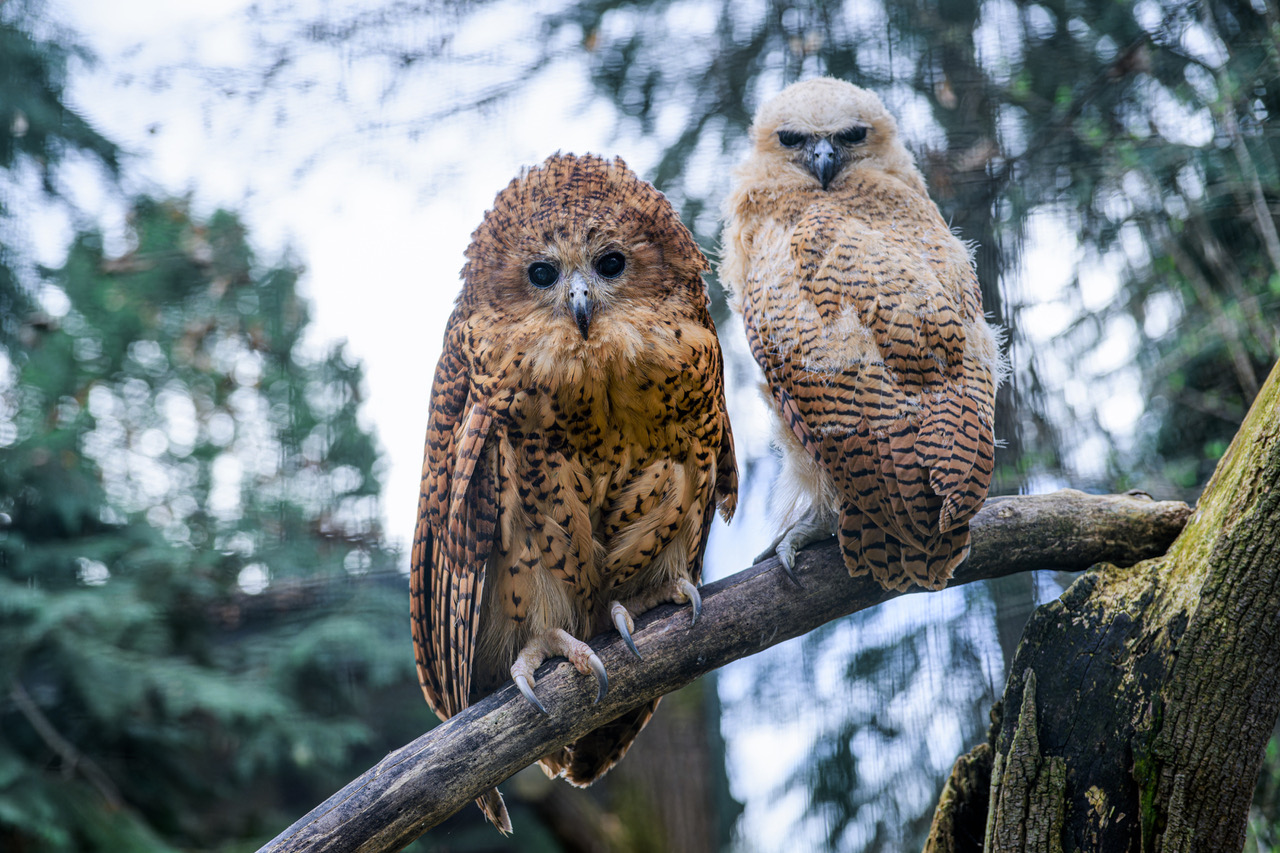
The young fish-eating owl Ketupa Pelova can be easily observed at the age of three months in the aviary near the Penguin Pavilion. Photo by Petr Hamerník, Prague Zoo
The Prague Zoo is currently rearing a young fish-eating owl Ketupa Pelova. It was hatched here at the beginning of this year and after initial fluctuations in weight and occasional reluctance to eat, the bird is now vital and thriving. The Prague Zoo is therefore well on its way to breeding one of the largest living owls ever, as the first zoo in the world. In addition, the little “fish owl” is now back with its parents in the aviary next to the Penguin Pavilion. Visitors can thus see the extremely rare cub with their own eyes.
“In the fall, we kept both of our pairs of ketup Pels in indoor quarters so they could concentrate on nesting. Our efforts were rewarded by the nesting of one of the pairs. At the beginning of the year, we observed changes in the behavior of both adults, and we soon discovered a young one under them,” says bird curator Antonín Vaidl.
At first, the mother warmed and fed the young, so the parents were left with peace and also plenty of food. But just a few days later, the situation changed. “A week passed and unfortunately we found out that the chick had been kicked out of the nest. We also found him hypothermic, which is why we placed him in an incubator and proceeded to rear him in breeding care,” adds Vaidl. According to him, returning to the nest would be too risky.

Prague’s young ketupa Pelova is a significant addition on a global scale: the Prague Zoo is the only zoo that has managed to breed this rare species. Photo by Petr Hamerník, Prague Zoo
The cub was subsequently fed by hand with young mice and rats, and later with fish. Pelova’s ketupas belong to the so-called “fish” or “fishing owls”, whose food in the wild is almost 100% fish. The ketupa look out for their prey from perches low above the surface or search for it while wading through shallow water. They will not disdain even frogs, crustaceans, or a small crocodile.
At the end of winter, the Prague chick continued to willingly accept food and thrive, so at the end of March it was returned to the parents’ improvised nest cavity, where they could gradually get to know each other through the grate in the inlet opening. So far, it cannot be said that it was a complete “adoption by their own parents”, as was the case in the past at the Prague Zoo, for example, with the breeding of Javan grebes or last year with kea nesters, but a large dose of tolerance of the cub on the part of the parents is evident. This step is important for his socialization. Thanks to the return to the aviary, the cub is also easily visible from the visitor areas.

Pelovy’s ketupa chick (on the right in the photo) is characterized by light coloration and remnants of down feathers. Visitors can easily recognize him alongside his parents. Photo by Petr Hamerník, Prague Zoo
Prague Zoo has been breeding Pelovy ketups since 2019, when it acquired the two mentioned pairs from a specialized owl breeding center in Monticello, Italy. It thus became the only public institution in the world where this species can be seen. In nature, ketupa Pelovy inhabit sub-Saharan Africa. These are some of the largest owls in the world – in adulthood they can weigh up to two kilograms and have a wingspan of one and a half meters.

